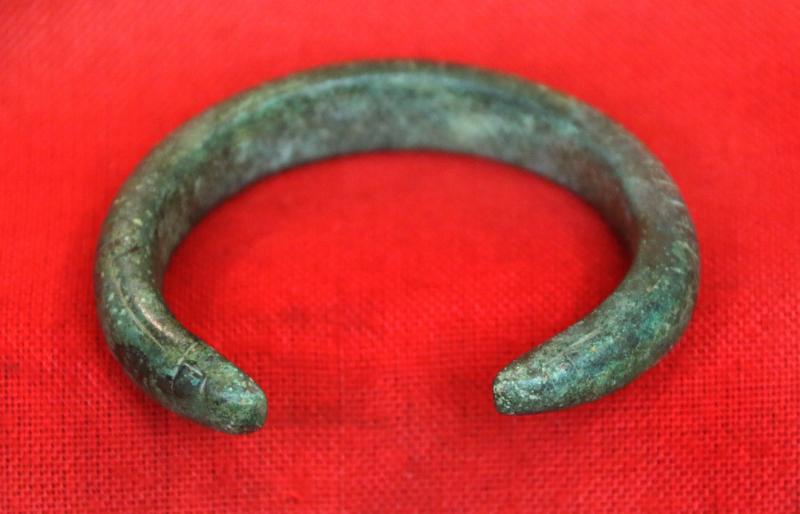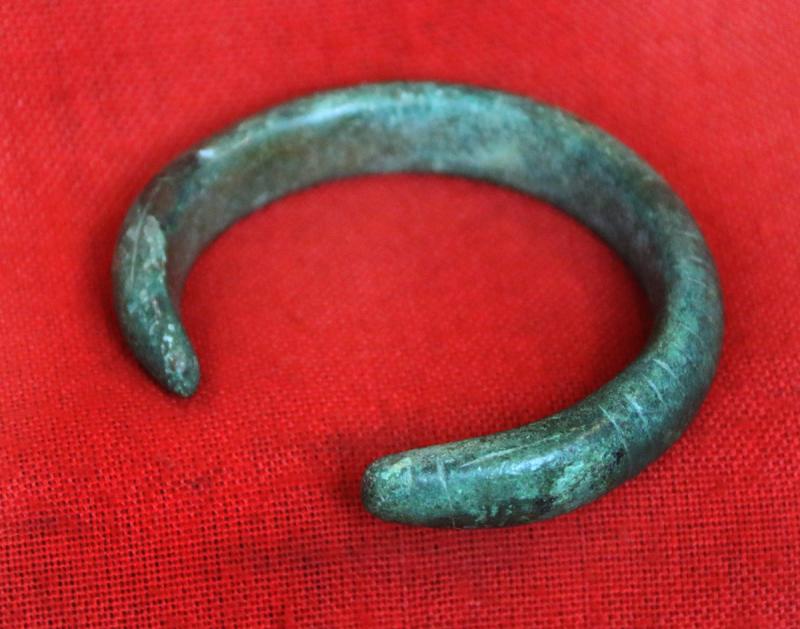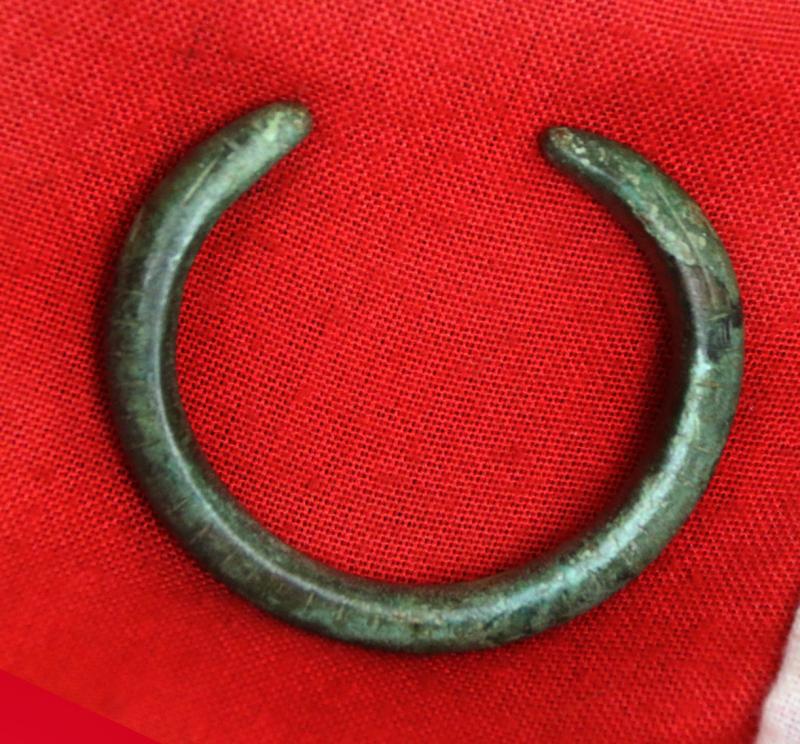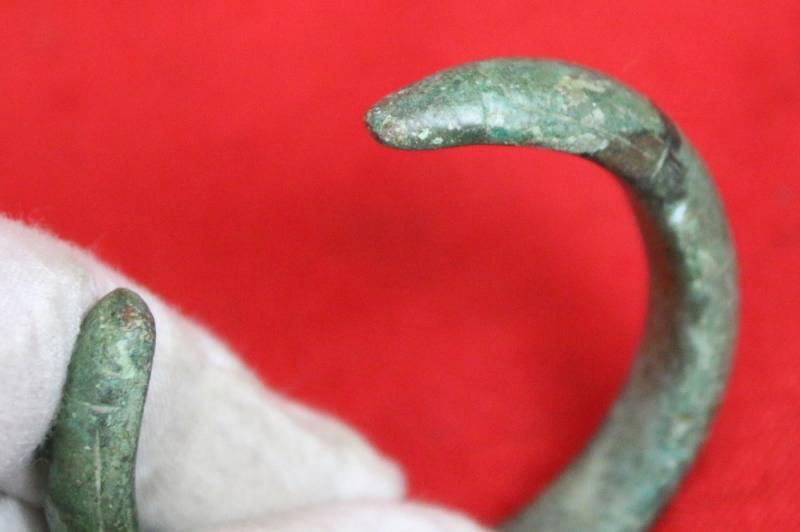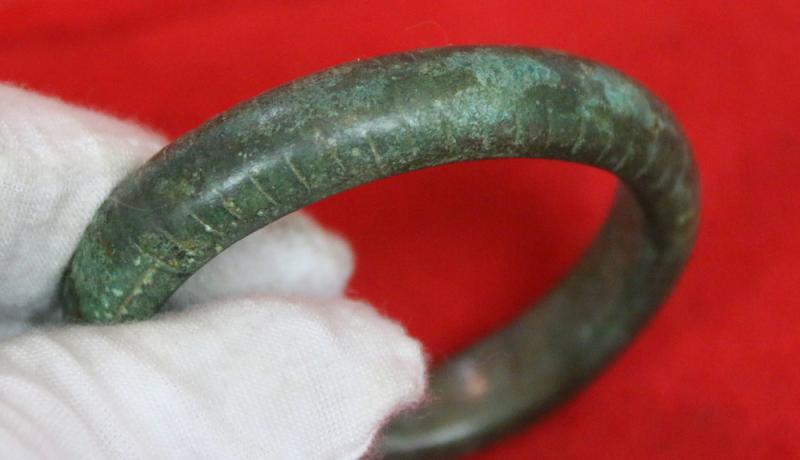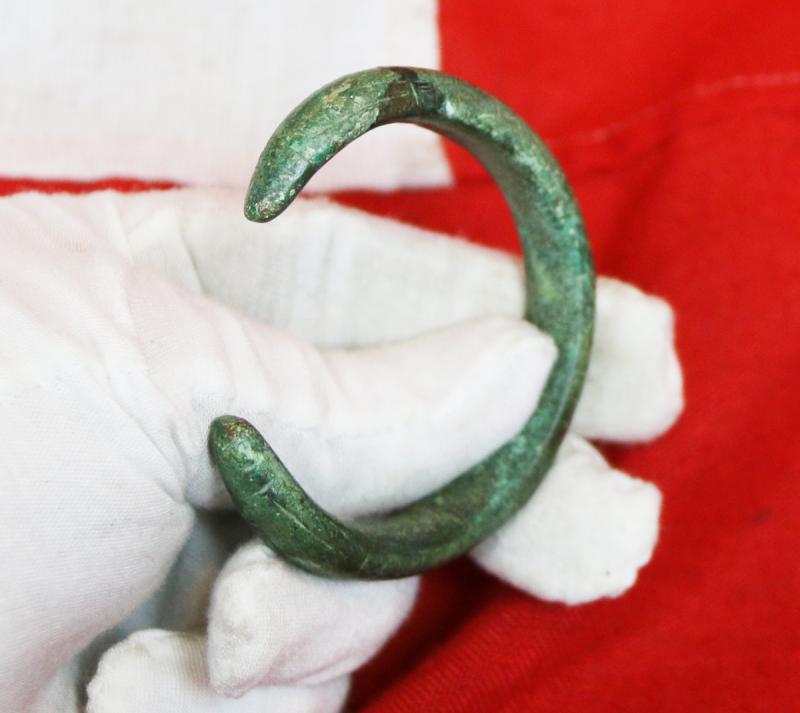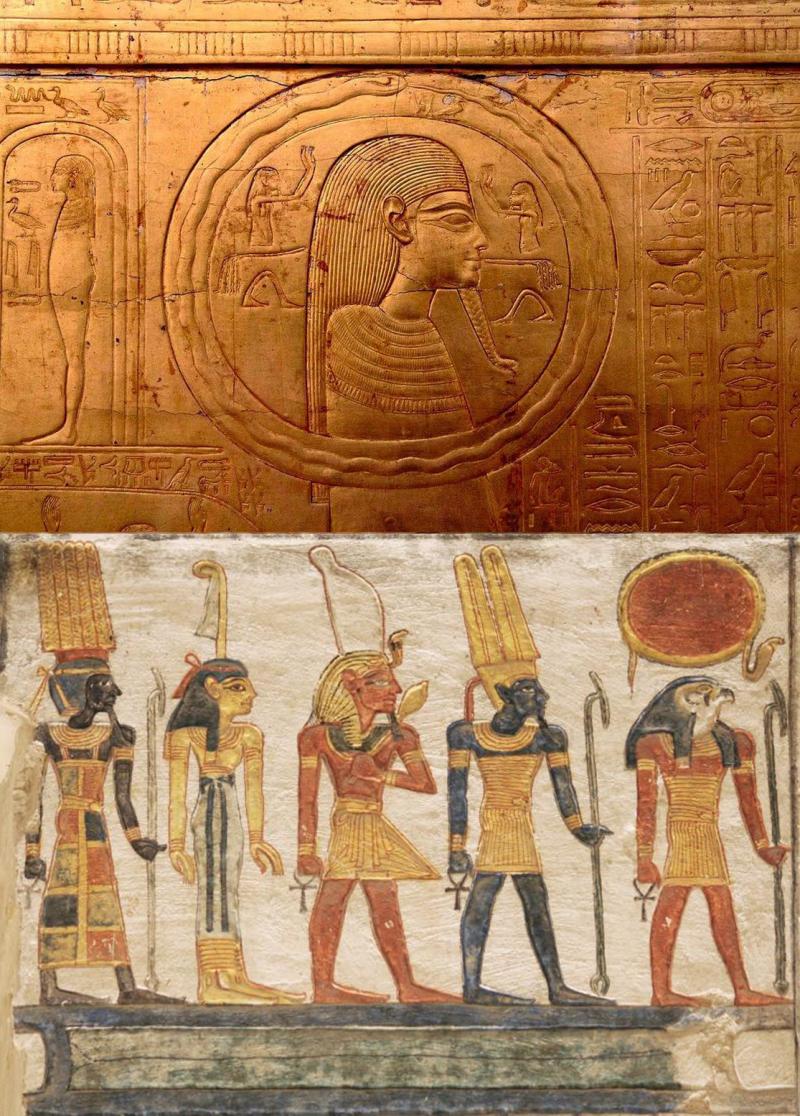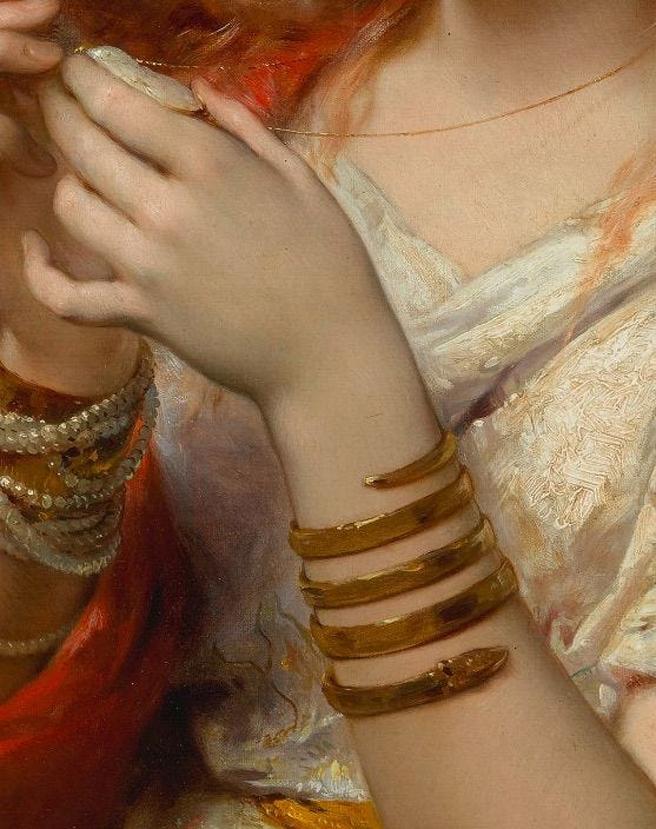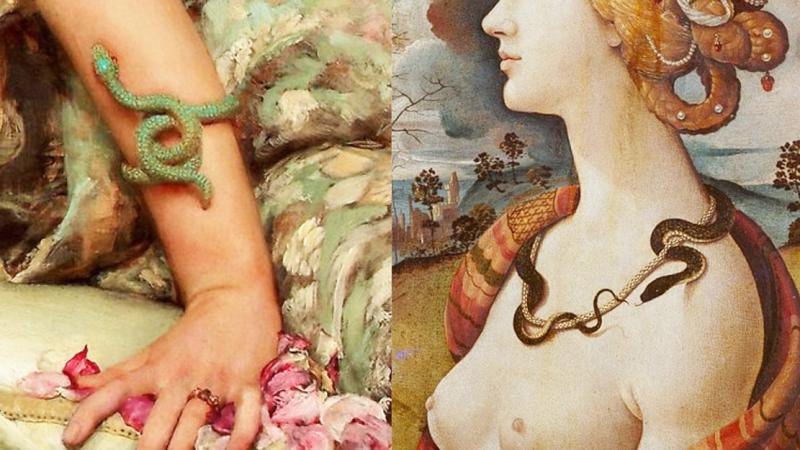A Most Attractive, Serpent, Bronze Age Power Bracelet, Armilla, & Arm Ring. A Fabulous 1000 B.C. Arm Adornment, With Most Beautiful Natural Aged Patination Colour of Rich Emerald Green, In Superb Condition With Substantial Heft & Gravitas
Ancient Bronze Age, in D section form, around 3000 years old.
Armillae , bracelets worn by the Ancient Romans, in both the early republic era and the later imperial age, from Augustus, the 1st Emperor, thereafter. They were always a sign of status and power, alongside the status ring, and often, when the shape of a serpent, they were to represent renewal and immortality.
The serpent was associated with the goddess Salus protector of health and well-being, making these bracelets highly sought after in ancient civilizations. In the pre-Roman era they often had a connection to Cernunnos, the ram horned serpent. A Celtic pagan deity, sometimes depicted with horns, and, as a serpent, Cernunnos represents the earth, fertility, and the cycles of nature.
In recovered ancient art and statuary one can see great warriors and nobles adorned with such serpent based arm rings, especially in Ancient Egypt representing the Sacred Serpent Goddess Wadjet
Snake jewelry was not limited to Egypt in the Ptolemaic and Roman Periods, and, in fact, was not a traditional Egyptian sort of jewelry adornment before the Ptolemaic Period although it was very popular as an art form. Bracelets with animals, including snakes, appeared in Western Asia from about the eighth century BC, and spread to Greece in the fifth century BC, and came to Egypt mainly with the Ptolemaic Dynasty. In Greek culture there were certainly healing associations with snakes, but there may have been other associations, too.
Pictures in the gallery are of Ancient Egyptian wall art from tombs, depicting figures adorned with Wadget snake Goddess bracelets, arm rings, and crowns. Detail, from the second gilded shrine of King Tutankhamen, 13th century BCE
(Left) detail paintings of “The Roses of Heliogabalus,” Lawrence Alma-Tadema, 1888 | (Right) and “Portrait of Simonetta Vespucci,” Piero di Cosima, 1480
Gold Snake Rings, Roman Period, 1st century AD, the Metropolitan Museum of Art
2.6 inches across, just under 3 ounces in weight, maximum thickness 0.4 inch
Code: 25804
895.00 GBP

